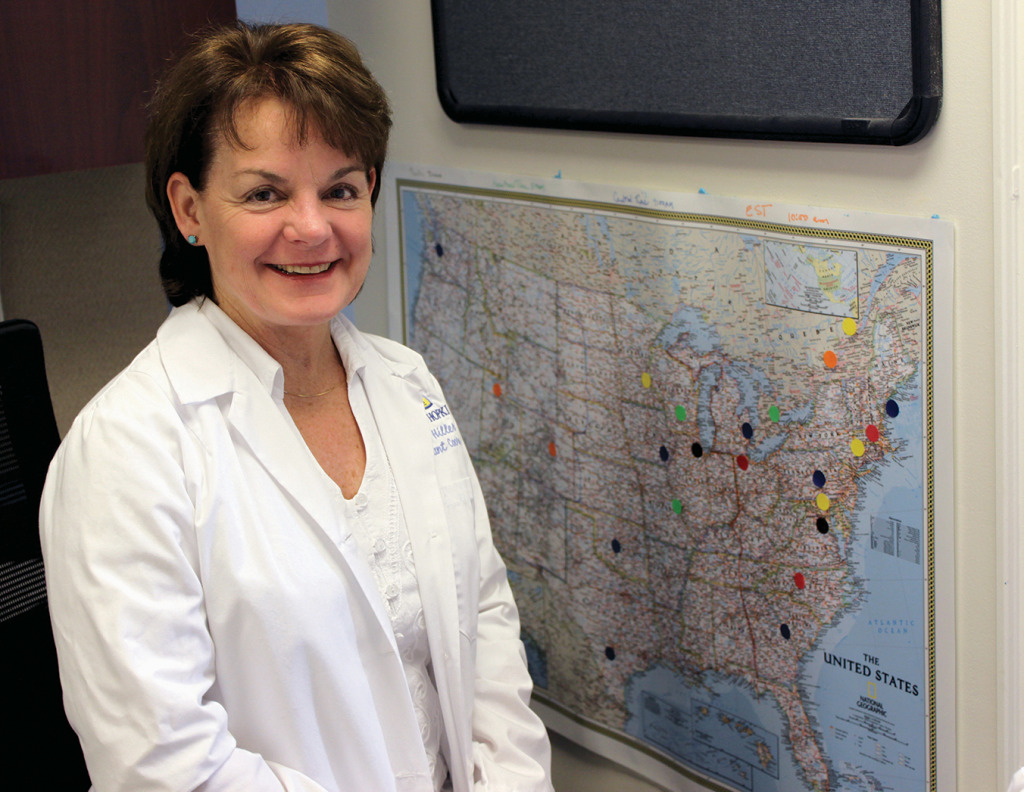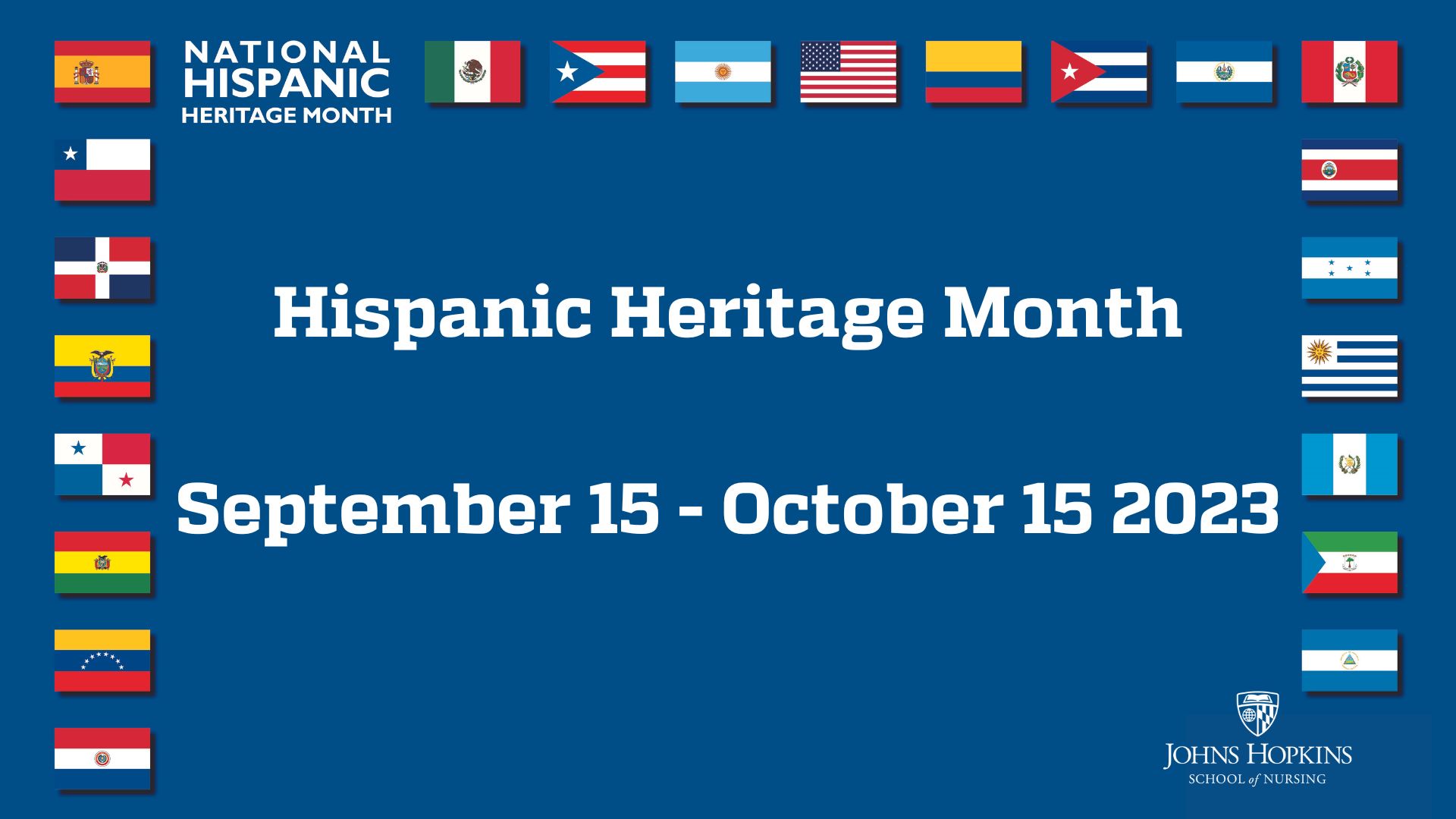New life for those with transplants and for nurses who couldn’t bear to stand by
As a clinical nurse specialist with the Incompatible Kidney Transplant Program at The Johns Hopkins Hospital, Janet Hiller, MSN, RN, often hears about patients who are getting sicker while waiting to find donors. Wanting to help, Hiller decided to
run her name through the tissue typing database in late 2009. “It only takes one new donor to stimulate a lot of matches,” she says. Out of a pool of 100 recipients, she was a match for one, a young woman in her 20s, whose name was surprisingly familiar to her.
“It has been four years since [my donation], and I feel absolutely no different. There aren’t even any scars”
– Janet Hiller, MSN, RN
Earlier that year, the same young woman was scheduled to be part of a national kidney exchange at Hopkins. A program like this often begins with an altruistic donor who offers his kidney to Patient 1. A friend or relative of Patient 1 donates a kidney to Patient 2, whose friend or relative donates to Patient 3, and so on. But one donor had to drop out of the exchange for medical reasons. That left the young woman without a donor. Two months later, in early 2010, Hiller donated her kidney.
“It’s easier than a lot of people think it is,” says Hiller, who has never met the recipient. Hopkins employees who become living donors get an additional four weeks of leave to recover from surgery. As for long-term complications, “It has been four years since [my donation], and I feel absolutely no different. There aren’t even any scars.”
Since 1954, when the first such donation took place, there have been more than 50,000 living kidney donors, according to the National Kidney Registry. Most donors at Hopkins give a kidney directly to a loved one or participate in a paired exchange. But there are also a few Good Samaritan donors like Hiller who donate a kidney to anyone in need.
For Susan Humphreys, PhD, RN, kidney donation was the second item on her bucket list. (The first was to complete her doctoral dissertation.) The Johns Hopkins Hospital nurse manager became interested in donating when she started taking yoga lessons and reading Eastern philosophy three years ago. Realizing that she was a healthy 64-year-old woman who had never had surgery, “I wanted to do something with my good health,” she says.

Humphreys donated her kidney in early 2014. A week later, her recipient, a woman in her 20s, wanted to meet her at the hospital. There, Humphreys found out that the woman had been on dialysis after losing the kidney her mother gave her when she was a child. “It’s very special to get to know your recipient and to incorporate them into your close relationships,” Humphreys says. They continue to keep in touch through Facebook.
No matter how committed they are, Good Samaritan donors naturally have doubts at some point during the process, especially if loved ones aren’t completely supportive of the decision. Hiller’s youngest daughter, 15 at the time, was concerned about complications.
“Her dad said, ‘There is a 1 in 10,000 chance that mom could die,’ ” Hiller says. “All she could hear is, ‘Mom could die.’ She didn’t hear [the odds].” Because of her reaction, “I thought seriously about [the idea of donating] in relation to her and the family. If my family wasn’t OK with it, then I wouldn’t do it.” After they talked more about the surgery, Hiller’s daughter eventually agreed she should go through with it.
Humphreys—who also has a daughter who was initially upset about her decision—was anxious about the surgery herself. Having once worked in the kidney program, “I know that things can go wrong, and I know no one is immune to [that],” she says. Humphreys also worried whether her kidney would work with the recipient, considered a “high-risk” patient because of her history.
Humphreys actually talked to Hiller about these concerns. “She was reinforcing to me that at some point you decide [to donate] regardless of the risks,” Humphreys says.
And on surgery day, Humphreys had a “wonderful experience.”
“[Donating] gave me joy and that very deep feeling of being interconnected with people in the world,” she says. “If I had two kidneys [to spare], I’d do it again.”
Transplant Group’s Guiding Hands
“You have to jump a really high bar to clear being a [kidney] donor,” says living donor and Nurse Manager Susan Humphreys, PhD, RN. Medical conditions, lack of family support, and work constraints are reasons that a potential donor may drop out of the program or be ruled out by the transplant team. Every week, the team discusses whether donors can continue with the screening process, which can take three to six months.
Potential donors fill out a basic questionnaire that covers health and family history and then go through lab testing. At this point, people with certain medical conditions may be informed they cannot continue the process, says Pam Walker, RN, living donor nurse coordinator. These include diabetes, heart or kidney disease, and infectious diseases. Donors who pass the medical screening have a full-day evaluation at the hospital. Along with undergoing a CAT scan and an EKG, donors meet the surgeons, psychologists, and nurse coordinators on the transplant team. They also meet with a donor advocate (who does not have contact with the recipient) and a social worker.
After surgery, living donors meet with transplant nurse practitioner Kate Knott, MSN, CRNP, who explains short- and long-term restrictions, such as the need to avoid non-steroidal anti-inflammatory drugs like Ibuprofen. She follows up after six months and every year thereafter.
Throughout the process, donors who have doubts or anxiety have “plenty of time to ask questions,” says Sherrie Klunk, RN, living donor nurse coordinator. “We educate them so they have all the information they need to make informed decisions.”
What about donors who change their minds late in the game?
That’s completely fine, says Mary Kaiser, clinical social worker and living donor advocate. “Up until the very last second, if they want to change their minds, they can,” she explains. “It’s very special that they are [considering] having a surgery just to help another person. We support any decision they make.”

 No. 1 Rankings for the School of Nursing and a Pipeline to the “Best Jobs”
No. 1 Rankings for the School of Nursing and a Pipeline to the “Best Jobs” Best of On The Pulse 2023
Best of On The Pulse 2023 Dr. Bonnielin Swenor, Inaugural Endowed Professor of Disability Health and Justice
Dr. Bonnielin Swenor, Inaugural Endowed Professor of Disability Health and Justice Celebrate National Hispanic Heritage Month
Celebrate National Hispanic Heritage Month Nurses Educational Funds (NEF) Awards Scholarships to Six JHU School of Nursing Doctoral Students
Nurses Educational Funds (NEF) Awards Scholarships to Six JHU School of Nursing Doctoral Students






